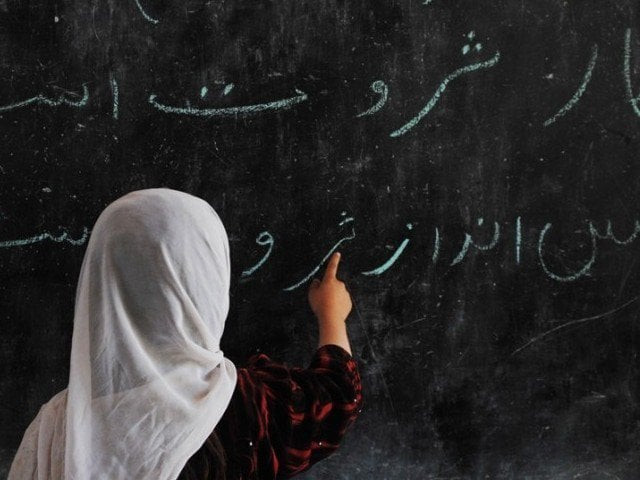Rising from the ashes: Tameer-e-School Programme to be launched again
Shortage of funds, software glitches behind decision to take start over

PHOTO: AFP
The Khyber-Pakhtunkhwa government is re-launching the Tameer-e-School Programme (TSP) after reassessing the entire project and removing visible lacunae in the system, an official told The Express Tribune.
According to the official, the programme was initially launched in the summer of 2014 on a trial basis to evaluate feedback from donors - especially the technical system present at the backend provided by a bank for funds transfer.
After the initial test phase, over 60 schools received funding for missing facilities while work was completed on 30 educational institutes. This phase also provided insight on technical problems for donors. These included the use of software and funds by parent-teacher councils.
After the government reassessed the programme and made technical changes where required, it decided to re-launch it. According to the official, the main objective was to provide basic facilities to all schools in the shortest possible time.
Development constraints
The K-P government has been facing massive constraints in the development sector and the provision of facilities at government schools.
“The ruling party faced an uphill task delivering the promises of its manifesto,” a senior official from the education department told The Express Tribune. “This was because it did not realise there was a shortage of funds required to complete its agenda of change.”
The main reason for the shortage was the federal government did not transfer K-P’s promised share in net hydel profits.
Needing increased security
Officials familiar with the development said security concerns escalated in the aftermath of the Army Public School and Bacha Khan University attacks. This triggered increased demands for not only basic facilities – such as boundary walls and gates – but also security.
When contacted, Minister for Education Muhammad Atif Khan told The Express Tribune assessments showed Rs43 billion was required to provide missing facilities at schools across the province. He added the provincial government had released Rs10 billion and more funds would be disbursed in the future.

“The government, for the very first time in history, allocated 28% of its resources to education and made a portfolio increase of around 11%,” he said. “An amount of more than Rs100 billion was spent on the educational needs of the province.” However, despite these allocations, schools remain without missing essentials such as toilets, boundary walls and potable water as the budget was not enough to cover these expenses.
Looking for expat love
“If anyone living abroad wants to improve the condition of schools in the province, there is nothing wrong with it,” the minister said. He added PTI Chairperson Imran Khan was in touch with several donors to improve K-P’s education system.
In the initial TSP, missing facilities would be provided to an estimated 818 schools across K-P. Now that figure has increased to 1,069 schools. The programme was initially criticised for a lack of transparency and dubbed a publicity exercise; a claim denied by the minister and the department.
Officials said the whole process would be made transparent and could be tracked as funds would be directly transferred from donors to the PTCs of each school. Subsequently, the donor could track the progress of their funds on the website with photos being uploaded for every activity at a particular school. However, according to the latest report of the K-P Independent Monitoring Unit (IMU), 25% of schools still lacked clean water, 12% were without boundary walls, 14% lacked toilets and 35% did not have electricity.
Tameer-e-School Programme was launched in April 2014 to improve the standard of education in the province, aimed at generating funds from not only locals but Pakistanis living abroad. According to its website, “Interested individuals and organisations can donate funds towards the improvement of deserving government schools.”
Published in The Express Tribune, February 15th, 2016.













COMMENTS
Comments are moderated and generally will be posted if they are on-topic and not abusive.
For more information, please see our Comments FAQ